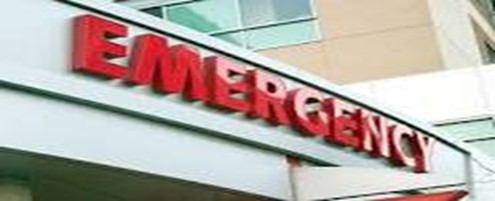Medical liability, often referred to as medical malpractice, is a critical issue in healthcare, including emergency room (ER) settings. Proving medical liability in ERs can be challenging due to the complex nature of emergency care and the need to establish negligence or errors. In this blog, we will explore the process of proving medical liability in emergency room settings, examining the key elements and challenges involved.
Understanding Medical Liability
Medical liability refers to situations in which healthcare providers’ actions, negligence, or deviations from the standard of care result in harm to a patient. In an ER, medical liability claims can arise from misdiagnoses, delayed treatment, medication errors, surgical mistakes, or communication breakdowns. Proving medical liability requires demonstrating that the healthcare provider(s) failed to meet the established standard of care, resulting in harm to the patient.
Key Elements in Proving Medical Liability
- Duty of Care: The first step in proving medical liability is establishing that a duty of care existed between the patient and the healthcare provider. In ERs, this duty is usually assumed when a patient seeks treatment.
- Breach of Standard of Care: To establish negligence, it must be demonstrated that the healthcare provider breached the standard of care that is typically expected in similar circumstances. This may involve expert testimony comparing the provider’s actions to what a reasonable provider would have done.
- Causation: It is crucial to prove a direct link between the breach of the standard of care and the patient’s injury or harm. This requires establishing that the provider’s actions were a substantial factor in causing the harm.
- Damages: In a medical liability case, damages refer to the harm or losses suffered by the patient as a result of the provider’s negligence. This can include medical expenses, lost wages, pain and suffering, and other tangible and intangible losses.
Challenges in Proving Medical Liability in ERs
- Complex and Rapid Decisions: ER healthcare providers often need to make rapid decisions under intense pressure. Proving negligence can be challenging when it’s difficult to determine if a different decision would have led to a better outcome.
- Lack of Documentation: In some cases, inadequate documentation in the ER’s medical records can hinder the ability to prove negligence. Clear and thorough documentation is essential in establishing what occurred during a patient’s visit.
- Informed Consent: In emergency situations, obtaining informed consent can be challenging, making it difficult to prove that the patient fully understood the risks and benefits of the treatment provided.
- Expert Testimony: Medical liability cases require expert testimony to establish the standard of care and whether it was breached. Since doctors who practice in the state where the malpractice occurred generally will not testify as an expert for the claimant in a medical malpractice case, experts are generally obtained from another state.
Proving medical liability in emergency room settings is a complex and multifaceted process. To succeed in a medical malpractice case, one must establish the duty of care, a breach of the standard of care, causation, and damages. However, this process is often challenging due to the rapid decision-making, lack of documentation, and other complexities unique to ER environments.
It’s essential for patients and their families who suspect medical negligence in the ER to seek legal counsel from experienced medical malpractice attorneys. These professionals can help gather evidence, secure expert testimony, and navigate the legal process to determine if there is a valid case for medical liability. Ultimately, the goal is to ensure that patients receive fair compensation when medical negligence in an emergency room setting has caused harm.
Lloyd W. Gathings
Gathings Law
Birmingham, AL
Ph. (205) 322-1201

